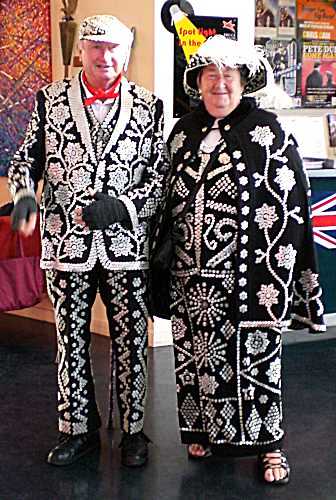
Great documentary from the BBC about the day in 1982 when the Isle of Anglesey floated away.
Listen here
(photo by Eric Jones)
As QI, cabbies and wise older siblings should have taught us, some things everyone believes are in fact untrue. This blog hopes to add further pollution to the stream of veritability.

 The popular racist and BNP spokesperson, Nick Griffin, is one of a number of celebrities to appear on BBC's genealogical documentary series Who Do You Think You Are? The announcement has caused controversy with Griffin's followers and regular viewers, ahead of the latest series of the show.
The popular racist and BNP spokesperson, Nick Griffin, is one of a number of celebrities to appear on BBC's genealogical documentary series Who Do You Think You Are? The announcement has caused controversy with Griffin's followers and regular viewers, ahead of the latest series of the show. Speaking to the press about the proposal, the Chair of the Future of Science Foundation, Prof. Sara Brigitte said, "This isn't a move that will effect most of us in the profession but it is an essential move for the scientific community to make if we want to bridge the gap between us and ordinary people."
Speaking to the press about the proposal, the Chair of the Future of Science Foundation, Prof. Sara Brigitte said, "This isn't a move that will effect most of us in the profession but it is an essential move for the scientific community to make if we want to bridge the gap between us and ordinary people." Fans of the popular, and infamous, English jazz singer Amy Winehouse may be intrigued to hear where her name originates.
Fans of the popular, and infamous, English jazz singer Amy Winehouse may be intrigued to hear where her name originates. Whilst the US is as broad culturally as it is geographically, Hawaiian culture is noticeably different, in even the most general aspects, to that of the mainland. One numerological example is the Hawaii doesn’t subscribe to the European Christian beliefs that 7 is lucky, 13 unlucky and so on.
Whilst the US is as broad culturally as it is geographically, Hawaiian culture is noticeably different, in even the most general aspects, to that of the mainland. One numerological example is the Hawaii doesn’t subscribe to the European Christian beliefs that 7 is lucky, 13 unlucky and so on. The origin of the so-called 'Pearly Kings and Queens', an iconic London tradition is heartily debated. Some maintain that the donning of shimmering, button-adorned clothing, started when a shipment of buttons mistakenly arrived at a London dock.
The origin of the so-called 'Pearly Kings and Queens', an iconic London tradition is heartily debated. Some maintain that the donning of shimmering, button-adorned clothing, started when a shipment of buttons mistakenly arrived at a London dock.